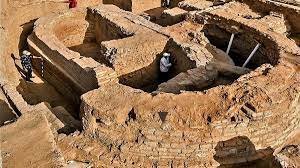
Soil-based Microbial Fuel Cells
Subscribe to Never Miss an Important Update! Assured Discounts on New Products!
Must Join PMF IAS Telegram Channel & PMF IAS History Telegram Channel
- Context (IE): A team led by Northwestern University developed a new fuel cell that can harvest energy from microbes living in the soil.
- Instead of using chemicals to generate electricity, they harvest electricity from bacteria that naturally give out electrons to nearby conductors.
- These electrons flow from anode to cathode to create an electric circuit.
- It can last forever as long as there is organic carbon in the soil for the microbes to break down.
- It can potentially be used in green infrastructure and precision agriculture applications.
Fuel Cells
- A fuel cell is a device that converts chemical energy into electrical energy.
- It uses hydrogen and oxygen gas as fuel to generate electricity. However, there is no combustion involved.
- Fuel cells can vary from tiny devices producing only a few watts of electricity, right up to large power plants producing megawatts.
Fuel Cell Mechanism

- A fuel cell consists of a cathode, an anode, and an electrolyte.
- The electrolyte enables the movement of the ions between the electrodes.
- At the anode, catalyst causes the fuel to undergo oxidation & generates +ve charged ions & electrons.
- The ions move from the anode to the cathode and the same time, the electrons flow from the anode to the cathode through an external circuit, producing direct current electricity.
- At the cathode, another catalyst causes ions, electrons, & oxygen to react, forming water as by-product.
- The reaction rate of this electrochemical reaction is quite low.
- Catalysts such as platinum or palladium or gold are used to speed up the reaction.





![PMF IAS Environment for UPSC 2022-23 [paperback] PMF IAS [Nov 30, 2021]…](https://pmfias.b-cdn.net/wp-content/uploads/2024/04/pmfiasenvironmentforupsc2022-23paperbackpmfiasnov302021.jpg)










